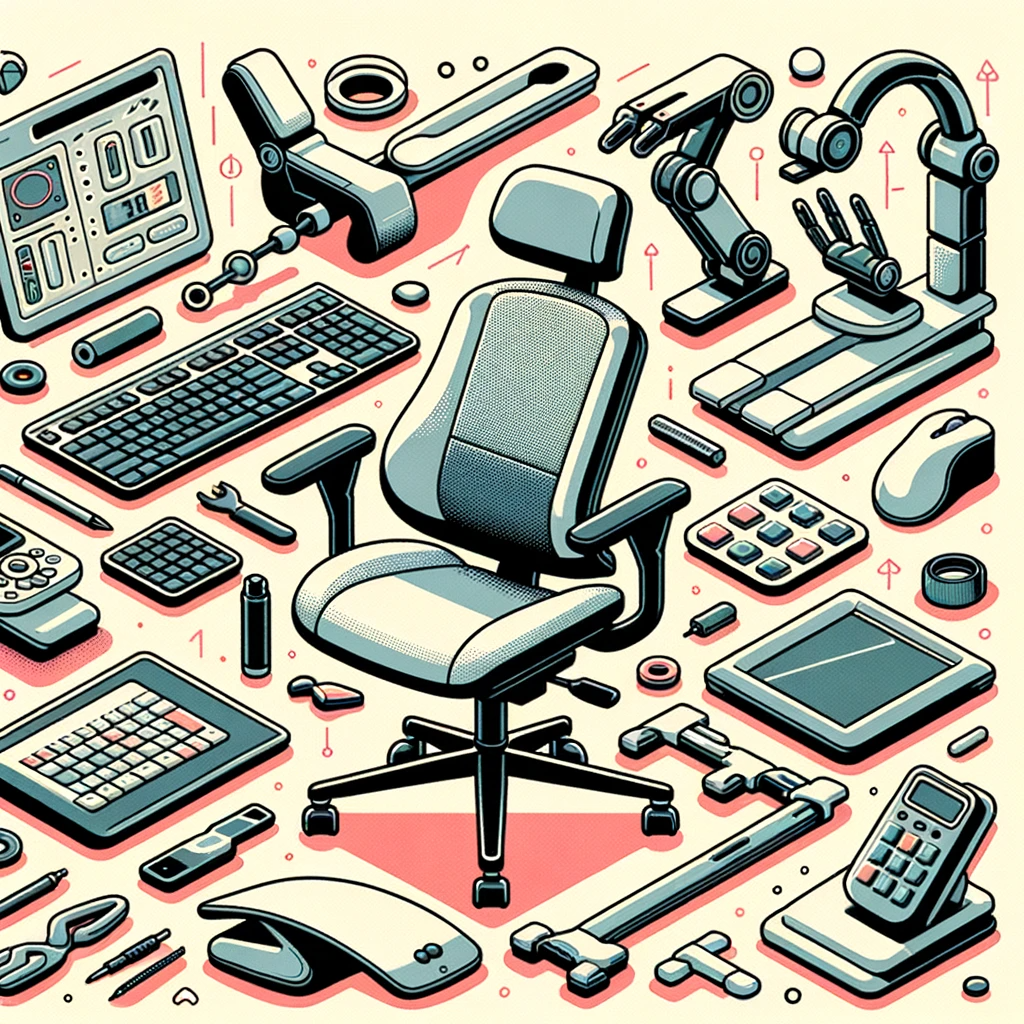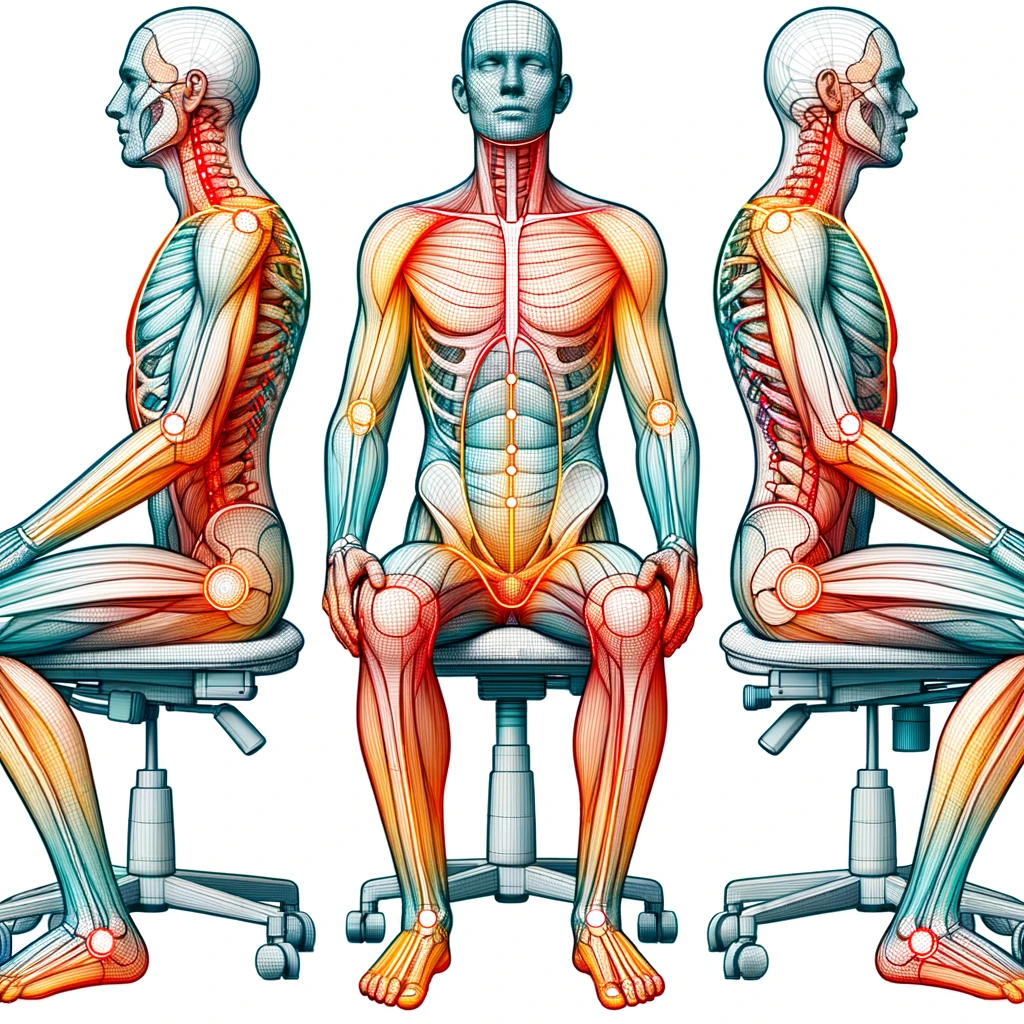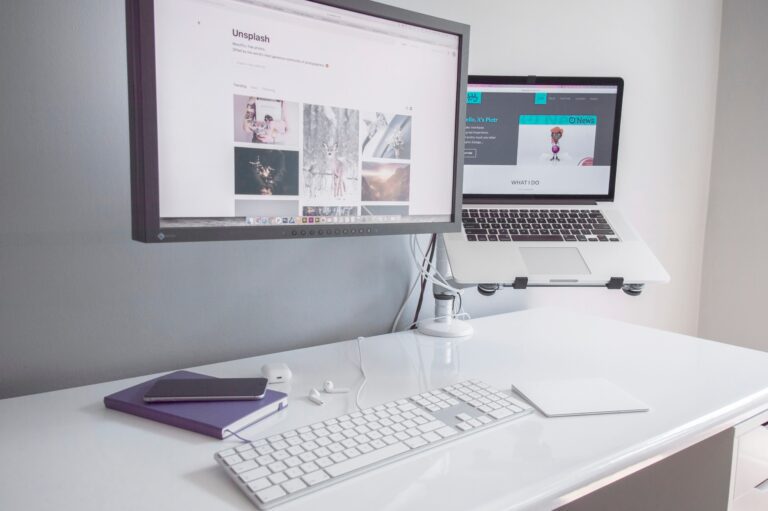Boost Your Productivity with Ergonomic Tools
In today’s fast-paced work environment, optimizing productivity is crucial for success. One often overlooked aspect of productivity is the impact of the tools we use. The right tools can make a significant difference in our efficiency, comfort, and overall well-being. That’s where ergonomic tools come into play. In this article, we will explore the benefits of ergonomic tools and how they can enhance your work experience.
What readers will learn by reading this article:
- The definition and significance of ergonomics in creating safe and efficient workspaces.
- The various benefits of using ergonomic tools, including increased productivity, improved focus, and reduced discomfort.
- How to choose the right ergonomic tools and implement ergonomic practices in daily routines.

Understanding Ergonomics and its Relevance
To fully appreciate the benefits of ergonomic tools, it’s important to understand the concept of ergonomics itself. Ergonomics is the science of designing and arranging workspaces, tools, and equipment in a way that maximizes safety, comfort, and efficiency. It focuses on creating an environment that minimizes physical strain and reduces the risk of injuries.
Implementing ergonomic principles in the workplace or home office is crucial for several reasons. First and foremost, it promotes the well-being of individuals by reducing the physical toll of repetitive tasks and poor posture. By aligning workstations with the natural movements and capabilities of the human body, ergonomic tools help prevent musculoskeletal disorders and alleviate discomfort.
Furthermore, ergonomics has a direct impact on productivity. When individuals are comfortable and their physical health is supported, they can work more efficiently and with greater focus. By optimizing the design of the workspace, tools, and equipment, ergonomic practices enhance workflow and minimize wasted motions.
Key Benefits of Ergonomic Tools
The use of ergonomic tools offers numerous benefits that can significantly improve both physical and mental well-being. Let’s take a closer look at some of these benefits:
- Increased Productivity: Ergonomic tools are specifically designed to enhance productivity. By optimizing the design of tools and workstations, they minimize unnecessary movements and streamline tasks. For example, ergonomic keyboards reduce the strain on wrists and fingers, allowing for faster and more accurate typing. Similarly, ergonomic mice provide better control and precision, resulting in improved accuracy and speed.
- Improved Focus and Concentration: Discomfort and physical strain can be major distractions while working. Ergonomic tools help alleviate these issues, allowing individuals to maintain better focus and concentration on their tasks. When physical discomfort is minimized, mental clarity is enhanced, leading to improved productivity and quality of work.
- Reduced Discomfort and Risk of Injuries: Prolonged periods of sitting or repetitive movements can lead to discomfort and the development of musculoskeletal disorders. Ergonomic tools, such as adjustable chairs and standing desks, promote proper posture and reduce strain on the body. By providing adequate support and encouraging movement, ergonomic tools help prevent common workplace injuries and alleviate discomfort.
- Prevention of Musculoskeletal Disorders: Musculoskeletal disorders (MSDs) are a significant concern in many industries. These disorders can result from prolonged repetitive movements, awkward postures, and excessive force. Implementing ergonomic tools and practices can help reduce the risk of MSDs by promoting proper body alignment, minimizing strain, and encouraging movement. By addressing the root causes of MSDs, ergonomic tools contribute to long-term health and well-being.
- Reduced Eye Strain: In today’s digital age, many of us spend countless hours in front of computer screens. This can lead to eye strain and discomfort. Ergonomic tools, such as adjustable monitor stands and anti-glare screens, help reduce eye strain by optimizing the viewing angle and minimizing glare. By creating a more comfortable visual experience, these tools contribute to better overall ocular health.
- Mental Well-being and Stress Reduction: Ergonomic tools not only benefit physical health but also have a positive impact on mental well-being. By reducing physical discomfort and promoting better posture, these tools contribute to a more relaxed and stress-free work environment. When individuals feel more comfortable and supported, they are better able to manage stress and maintain a positive mindset.

Different Types of Ergonomic Tools
Ergonomic tools come in various forms, each designed to address specific ergonomic needs. Let’s explore some of the most common types of ergonomic tools and their benefits:
- Ergonomic Keyboards and Mice: Ergonomic keyboards and mice are designed to reduce strain on the wrists, fingers, and hands. They feature a more natural and comfortable layout, allowing for a more relaxed typing and navigation experience. Some ergonomic keyboards also offer adjustable angles and wrist rests to further enhance comfort and reduce the risk of repetitive strain injuries.
- Ergonomic Chairs: A good ergonomic chair is vital for maintaining proper posture and reducing the risk of back pain. These chairs typically feature adjustable height, lumbar support, and armrests. By providing optimal support for the spine and promoting a neutral sitting position, ergonomic chairs help prevent discomfort and long-term spinal issues.
- Standing Desks: Standing desks have gained popularity in recent years due to their potential health benefits. They allow individuals to alternate between sitting and standing positions, promoting movement and reducing the negative effects of prolonged sitting. By encouraging better blood circulation and engaging different muscle groups, standing desks contribute to improved energy levels and reduced sedentary behavior.
- Monitor Stands and Document Holders: Proper positioning of the monitor and documents is essential for maintaining good posture and reducing eye strain. Ergonomic monitor stands and document holders help achieve optimal viewing angles and heights. They prevent the need for excessive neck and eye movements, promoting a comfortable and ergonomic visual experience.
- Task Lighting: Inadequate lighting can cause eye strain and lead to decreased productivity. Ergonomic task lighting provides focused and adjustable illumination, reducing glare and shadows. By optimizing the lighting conditions in the workspace, individuals can work more comfortably and with greater visual clarity.
These are just a few examples of ergonomic tools available in the market. Each tool serves a specific purpose and can have a significant impact on overall comfort and productivity. It’s important to choose the right combination of tools based on individual needs and preferences.
Choosing the Right Ergonomic Tools
Selecting the right ergonomic tools requires careful consideration of individual needs and preferences. Here are some factors to consider when choosing ergonomic tools:
- Work Tasks and Requirements: Evaluate the specific tasks you perform regularly and consider the ergonomic needs associated with them. For example, if you spend a significant amount of time typing, an ergonomic keyboard may be a priority. Understanding your work requirements will help you prioritize the tools that will have the most significant impact on your productivity and well-being.
- Body Posture and Comfort: Consider your body posture and comfort preferences when choosing ergonomic tools. Each individual has unique ergonomic needs, so it’s important to select tools that can be adjusted to accommodate your body size and shape. Look for tools with customizable features, such as adjustable height, tilt, and armrests, to ensure a comfortable fit.
- Product Quality and Durability: Investing in high-quality ergonomic tools is essential for long-term benefits. Check reviews and ratings to ensure that the products you choose are durable and built to last. Ergonomic tools made from high-quality materials will provide better support and withstand the rigors of daily use.
- Compatibility with Existing Equipment: If you already have certain equipment or furniture in your workspace, consider the compatibility of ergonomic tools with your existing setup. Ensure that the tools you choose can be seamlessly integrated into your current arrangement without causing any disruptions or compromises.
By carefully evaluating these factors, you can make informed decisions when selecting ergonomic tools that will best suit your needs and enhance your work experience.
Implementing Ergonomic Practices
In addition to using ergonomic tools, it’s important to incorporate ergonomic practices into your daily routine. Here are some practical tips to help you maintain an ergonomic work environment:
- Proper Ergonomics for Desk and Chair Setup: Ensure that your desk and chair are set up correctly to promote good posture and comfort. Adjust your chair height so that your feet are flat on the floor and your knees are at a 90-degree angle. Position your desk at a height that allows your arms to rest comfortably on the surface while maintaining a neutral wrist position.
- Take Regular Breaks and Stretch: Sitting or standing in one position for extended periods can lead to discomfort and fatigue. Take regular breaks to stretch and move around. Simple stretching exercises can help relieve muscle tension and promote blood circulation. Use break time to rest your eyes and focus on objects at different distances to reduce eye strain.
- Maintain a Balanced Work Routine: Finding a balance between work and rest is essential for long-term productivity and well-being. Create a work routine that includes scheduled breaks and time for relaxation or physical activity. Avoid excessive work hours and prioritize self-care to prevent burnout and maintain optimal productivity levels.

Creating an Ergonomic Work Environment
Beyond using ergonomic tools, creating a holistic ergonomic work environment is crucial for maximizing the benefits. Consider the following tips:
- Lighting and Noise Control: A well-lit workspace is essential for reducing eye strain and promoting productivity. Optimize natural lighting whenever possible and supplement it with task lighting as needed. Additionally, minimize distractions from excessive noise by using noise-cancelling headphones or sound-absorbing materials.
- Workspace Organization: A cluttered workspace can negatively impact focus and productivity. Keep your workspace organized and free of unnecessary items. Use cable management solutions to prevent tangled cords and tripping hazards. A clean and organized workspace promotes a sense of calm and facilitates efficient work.
Case Study: A Productivity Boost with Ergonomic Tools
John, a software developer, was struggling with long hours of sitting at his desk, which often left him feeling fatigued and experiencing back pain. He noticed that his productivity was declining, and he was having difficulty focusing on his tasks. Determined to find a solution, John decided to invest in ergonomic tools to improve his work environment.
First, John purchased an ergonomic chair with adjustable lumbar support and armrests. The chair allowed him to maintain a proper sitting posture and relieved the strain on his back. Almost immediately, he noticed a significant reduction in back pain and discomfort, allowing him to focus better on his work.
Next, John upgraded his keyboard and mouse to ergonomic ones that were designed to reduce the risk of repetitive strain injuries. The ergonomic design of these tools allowed John to type and click with ease, minimizing the strain on his wrists and fingers. As a result, he experienced less fatigue in his hands and was able to work more efficiently.
John also invested in a height-adjustable standing desk, which allowed him to alternate between sitting and standing throughout the day. Standing while working helped improve his blood circulation and reduced the strain on his lower back. He found that standing increased his energy levels and kept him more engaged in his tasks.
After implementing these ergonomic tools into his workspace, John noticed a remarkable improvement in his productivity. He no longer experienced the same level of fatigue and discomfort, allowing him to work longer without feeling drained. His ability to focus improved, and he felt more motivated to tackle his projects.
John’s success with ergonomic tools inspired his colleagues to make similar changes. The company recognized the positive impact these tools had on employee well-being and productivity, and they decided to invest in ergonomic equipment for the entire office. The overall work environment improved, resulting in happier and more engaged employees.
John’s experience demonstrates the transformative power of ergonomic tools in boosting productivity. By investing in ergonomic chairs, keyboards, and standing desks, individuals can create a work environment that promotes comfort, reduces strain, and enhances overall well-being.
Educating and Training on Ergonomics
To fully benefit from ergonomic tools and practices, it’s important to educate yourself and stay up-to-date on the latest ergonomic guidelines. Attend training sessions or workshops on ergonomics, and encourage your colleagues to do the same. By increasing awareness and knowledge about ergonomics, you can create a supportive and productive work environment for everyone.
In conclusion, ergonomic tools offer numerous
FAQ
Who can benefit from using ergonomic tools?
Anyone who spends long hours working on a computer or using handheld devices.
What are the benefits of using ergonomic tools?
Ergonomic tools reduce strain, improve posture, and enhance productivity.
How do ergonomic tools improve productivity?
By reducing discomfort and fatigue, ergonomic tools help users work more efficiently.
What if I’m already using productivity apps, do I still need ergonomic tools?
Yes, ergonomic tools complement productivity apps by promoting physical comfort.
How can ergonomic tools improve my posture?
Ergonomic tools provide proper support and alignment for your body while working.
What if I can’t afford expensive ergonomic tools?
There are affordable options available, such as adjustable stands or wrist rests.






